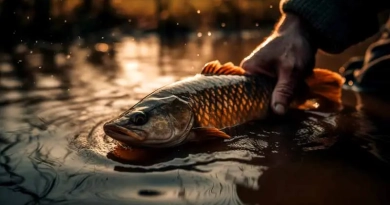
How do I use a canoe in a river with strong currents or rapids?
Riding the Rapids: Mastering the Canoe in Turbulent Waters
How do I use a canoe in a river with strong currents or rapids? As dawn casts its first golden rays over the river, the sound of rushing water fills the air, a constant reminder of the river’s wild and untamed nature. Here, the water does not forgive, and the unprepared are quickly taught the power of nature’s flow. Using a canoe in such challenging conditions is not merely about paddling; it’s about understanding, respecting, and adapting to the fierce dance of the river’s rapids.
Charting the Challenging Waters
Navigating rivers with strong currents or rapids is a complex and dynamic challenge, demanding a high level of skill, meticulous preparation, and a deep respect for the power of the water. Here’s an elaboration on the critical aspects required to manage these waters safely:
Understanding River Hydraulics
River currents and rapids are not random; they are the direct result of how water interacts with the riverbed’s topography. This interaction can create various hydraulic features that are beautiful yet potentially dangerous:
- Strainers: Objects like fallen trees or branches that water can pass through but a canoe or kayaker cannot. They can trap a paddler and are highly dangerous.
- Eddies: Circular movements of water that occur behind obstacles and can help paddlers to stop or rest in the current.
- Hydraulic Jumps: Where water flows over an object or drop and then flows back on itself, creating a recirculating current that can trap objects, including boats.
Each of these features requires specific strategies to navigate safely, emphasizing the need for education and experience in reading river conditions.
Equipment Suitability
The choice of canoe is pivotal when facing rapids:
- Whitewater Canoes: Unlike standard recreational canoes, whitewater models are built for durability and agility. They typically have a rounded or planning hull, which helps in maneuvering and provides stability in turbulent water. These canoes are also constructed with tough materials to withstand impacts with rocks and other common obstacles in rapid waters.
Paddler Preparedness
Rapids require quick reflexes and a calm, decisive approach:
- Experience and Confidence: Handling a canoe in rapids without sufficient experience is risky. Rapids demand not only physical ability but also the confidence to make swift decisions, which comes from practice and thorough knowledge of river navigation techniques.
Navigating with Precision and Safety
Skill Development
- Progressive Learning: Start with basic paddling techniques in calm waters and gradually move to more challenging conditions. This step-by-step approach helps build the necessary skills and confidence.
Choosing the Right Canoe
- Specialized Equipment: A whitewater canoe is essential for safely navigating rapids. Its design and material composition are critical for handling the rough conditions typical of rapid waters.
Safety Measures
- Protective Gear: Helmets and life jackets are mandatory. Additional gear, like knee and elbow pads, protects against injuries from collisions with the canoe or rocks.
Implementing the Best Practices
Educate and Train
- Professional Advice: Enroll in courses taught by qualified instructors who specialize in whitewater canoeing. These experts can provide both theoretical knowledge and practical training in real river conditions.
Scout the Rapids
- Pre-Navigation Assessment: Always scout the rapids before entering. This practice helps you spot potential dangers and plan the safest route through the rapids.
Practice Evasive Techniques
- Balance and Control: Master techniques such as high and low braces, which are crucial for maintaining balance and preventing capsizing in choppy waters.
Plan Your Route
- Strategic Navigation: Prior to entering the rapids, determine the safest route. A “V” in the water typically indicates where the current is strongest and free of obstructions. This planning is vital for a safe and enjoyable rapids experience.
By understanding these elements—river hydraulics, equipment suitability, and paddler preparedness—and implementing strategic planning and safety measures, canoeists can enhance their ability to tackle rapids with confidence and security.
Essential Tools and Resources
Equip yourself with the following to enhance your safety and effectiveness in handling rapids:
- Whitewater Canoe: Specifically designed for rapid conditions.
- Personal Protective Equipment: Helmet, life jacket, and possibly a dry suit or wetsuit depending on the water temperature.
- River Navigation Tools: Maps of the river, GPS devices, and perhaps a guidebook detailing the river’s rapids.
- Rescue Equipment: Throw ropes, knife, and a whistle for emergency communication.
Concluding the Adventure
As the river calms and the rapids become but a whisper behind me, the lessons of the water resonate deeply. Canoeing through rapids is not just about the thrill and the challenge; it’s about the harmony between paddler and river. Each stroke, each maneuver through the foaming water is a dialogue with nature, a testament to the paddler’s respect for the river’s might and mystery. With the right preparation, knowledge, and respect for the water’s power, the river’s challenges transform from obstacles to exhilarating elements of the journey.






